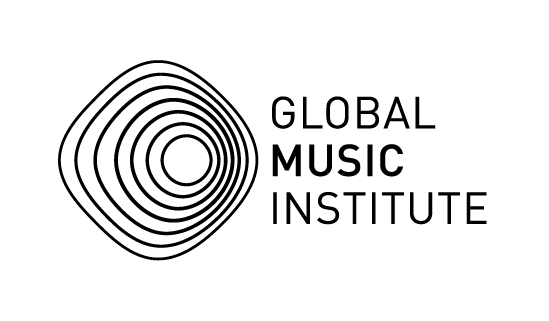
10 Mar GMI x AHH | Art in Adversity by Aakriti Mehrotra
We’re excited to share the second piece from our collaboration with A Humming Heart, an independently run, reader-supported, Indian music publication. Together, we bring to you an assortment of all things music- reviews, interviews, industry trends, and more. Today, we are sharing Aakriti Mehrotra’s piece on Art in Adversity.
WB Yeats used the haunting phrase “terrible beauty” in his poem Easter, 1916. He wrote the poem to commemorate the Easter Rising in 1916 in which Irish nationalists led a rebellion to win independence from British rule. The phrase described the connection between the beautiful and brutal, and how profound change can come from terrible death and destruction.
Artists have long used times of adversity and crisis as an inspiration for some of history’s most impactful and timeless works. Often, when artists search for an appropriate language to express chaos and carnage, it is art that is used as a tool of resistance and change.
How Indian art has been shaped by landmark events
The pain caused by the Partition of Bengal in 1905 ignited the national consciousness and gave rise to the Swadeshi Movement. Rooted in the pride of nationalism, the Bengal School of Art ran parallel with the Swadeshi spirit and was led by Abanindranath Tagore. In 1906, Tagore painted the Bango Mata whose name was later changed to Bharat Mata. The painting, considered to be the emblematic symbol of the Swadeshi Movement, showed a saffron clad woman as a deity and the mother of the nation, and evoked a strong sense of nationalism.
A few decades later, the independence of India in 1947 sowed the seed among some of the most iconic and important artists of India to usher a new era in Indian art. F.N. Souza, K.H. Ara, S.K. Bakre, H.A. Gade, M.F. Husain and S.H. Raza founded the Progressive Artists Group in 1947 and boldly rejected nationalism and the Bengal school style to celebrate the plurality of the nation. The group also came with different backgrounds, styles, and philosophies, and drew both from vernacular and folk traditions within the nation as well as western modernist practices. According to author Mulk Raj Anand, their contribution heralded “a new dawn in the world of Indian art”.
Post-2021 in perspective
More contemporarily, the collective conscience of the nation was stirred by the brutal gang rape of a young woman in a moving bus in Delhi on 16th December 2021. In retrospect, the ‘Nirbhaya effect’ is particularly visible in mainstream media. Scholars have pointed out that there came a shift in storylines in Bollywood and TV serials, and narratives of strong and independent women defying and fighting against the odds started coming to the fore.
In his paper The Rise of the “Rebel Woman” in the Post-2012 Popular Hindi Films, Madhurendra Jha looks at 2012 as an important marker in the timeline for Hindi cinema and the change in how the popular Hindi film industry has attempted to portray women since. Kangana Ranaut starrer Queen (2014) effectively showcased the contrast between a subservient Rani and an empowered Rani. Pink (2016) highlighted the importance of women’s consent. The protagonists of Pink, Lipstick Under My Burkha, Manmarziyaan assert their identity and independence. They are more nuanced, often flawed, just as male characters have always been.
As a direct response to the Nirbhaya tragedy, Bangalore-based visual artist Shilo Shiv Suleman started the Fearless Collective, where she asked artists to produce posters that showed an affirmative response against the obvious fear that had crept in for women for their safety. Seven years later, Suleman and a few women protesters painted the 60 ft mural at Shaheen Bagh that showed two women saying “Ishq Inquilab” and “Mohabbat Zindabad”, a testament to the women of Shaheen Bagh and the anti-CAA movement.
The anti-CAA protests of early 2020 saw art proliferate everywhere– on the streets, at monuments, at protest sites. Music, poetry and art were used as tools of resistance. Faiz Ahmed Faiz’ ‘Hum Dekhenge’ proved its timelessness and became a rallying cry for the spirited protesters. Young poet Aamir Aziz who had earlier written Ballad of Pehlu Khan after the mob lynching of a 55-year old man in Alwar in 2019, went on to write the stirring poem Sab Yaad Rakha Jayega during the anti-CAA protests. Pink Floyd’s Roger Waters recited the translated version of Aziz’s poem while demanding for the release of Wikileaks founder Julian Assange.
Covid 19- rise in independent music output, collaborations, and labels
How can we think of art at a time like this?
This was the question posed to artists and audience alike. From literally being termed “non-essential”, to the loss of livelihood that followed, Covid-19 has caused a lot of hardship, particularly for independent creators. But the anxiety came mixed with inspiration and creativity.
There has been prolific work, increased collaborations and curiously enough, a rise in labels too. Blackstratblues’ Hindsight is 2020 is a remarkable album from the ever-reliable Warren Mendosa that he describes is a result of his “experiences over the last, strange, strange year which seems to never end.” Blackstratblues document 2020 beautifully, both through clever titles like ‘This Will Be My Year’ and ‘We Are Responsible’, and through the music itself as the album shifts from up-tempo optimism to melancholia as it progresses.
Listening to Chennai-based band the F16s’ almost sinisterly croon ‘I’m on Holiday, Forever’ on their much anticipated EP Is It Time To Eat The Rich, it is clear that a sizable portion of the glittering record was shaped by these strange times. “Lyrically speaking, a lot of weight was added to the album because of the pandemic,” says guitarist Abhinav Krishnaswamy. Featuring songs with joyful music but dismal lyrics and song titles like ‘Sucks To Be Human’ and (literally) ‘The Apocalypse’, the band mentions that a lot of skeleton for the EP was prepared before but it was only during the pandemic that they began to actually flesh it out.
“The pandemic took away all distractions. It made us deep dive into everything. We were isolated together for the first time for so long ever and we were forced to be in a situation that we’ve never been into. It played a huge part in the way we wrote music, the way we produced it. You can’t think about anything else other than the situation you’re in, because it is the most overwhelming feeling, the most overwhelming situation the entire world was consumed in,” singer Josh Fernandez adds.
There’s also a defining workforce trend of 2021 being called YOLOing (New York Times). The YOLO economy refers to people turning their side hustles into full time jobs, risking stable and cushy jobs for what they really want to do. There’s no denying the multiple factors at play. And the likes of Amit Trivedi, Vishal Bhardwaj, and AR Rahman are surely not risking their stable jobs when starting their own music labels, but are seemingly “going for it” in a way they hadn’t before.
From collaborating to producing to distributing with Boxout.FM Recordings, rapper Alf4zi and producer morèno’s track ‘Ginza’ was made entirely remotely in 2020. And of course, this has been the case around the world. In the times of distancing and isolation, artists were pushed into exploring collaborations.
Ray Bradbury writes the lines “All this, this, this, all this– too much! It cracks the heart! And so? Find Art” in his poem, We have our Arts, so we won’t die of Truth. That’s why we must think of arts even in times like these. It is clear, in our uncertain world, terrible beauty matters. Art matters.




No Comments